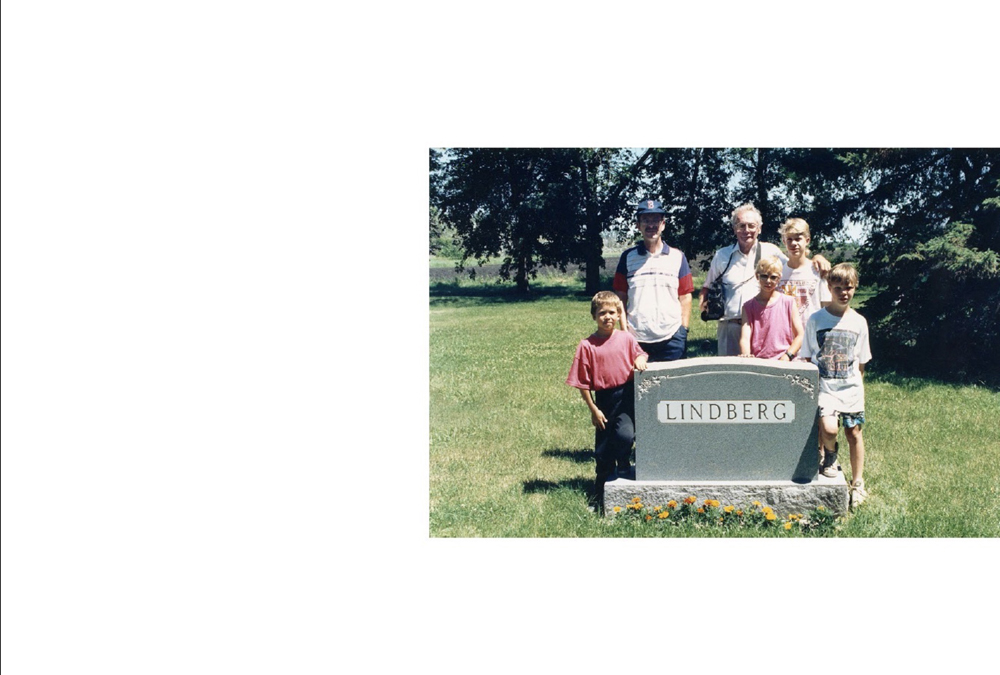In November 2009, Andrew Lindberg was on his way to meet his father for a hunting trip when the small aircraft that he was piloting crashed in the forests of Minnesota. Family members convened to search for the plane, and the discovery of the wreck and the pilot’s body brought some immediate closure to an unexpected tragedy.
The meaningful events in our lives are not easily compartmentalized, however, and our experience of moving through the world is mediated by time-altered memory and clouded by a haze of mediating imagery and information. “Malaysian Airlines Flight 370 vanished over the South China Sea in the spring of 2014, three weeks before I flew to Kuala Lumpur with my wife for her piano concert there,” writes the narrator of Ghost Guessed, a synthesized voice of co-authors Tom Griggs (who is Lindberg's cousin) and Paul Kwiatkowski. “The proximity of the tragedy to our travel date and the cycle of news speculation on its fate awakened memories of local media reporting the disappearance of my cousin Andrew’s flight over central Minnesota five years before.” Ghost Guessed is a ranging exploration of the fluid and malleable nature of memory, the alienating forms of mediated information, and the role that grief and traumas, both violent and nonviolent, can have in shaping our experiences.
The book contemplates not only the unresolvable grief surrounding Lindberg’s death, but also the anxieties wrapped around its direct and indirect aftermaths. Ghost Guessed is comprised of a series of short textual essays that take the events surrounding Lindberg’s death as a starting point, and contemporary photographs, as well as photographs of archival images, the source material including both family pictures and more recent images of screens. With this material the book attends to the often unreliable, confusing, and confounding character of both memory and media, and the insufficiency of either for providing sustained comfort or peace. While anchored in very specific individual experiences, the small book ably maps a larger terrain of experience and history upon which the two plane crashes serve as unlikely markers.
Griggs and Kwiatkowski take us through the decision not to tell Lindberg’s grandmother, suffering from Alzheimer’s, about Lindberg’s death; through Griggs’ visit to Malaysia, where news around the disappearance of MH370 resonated with Grigg’s memories of his cousin, and where he tries out a flight simulator; through Griggs’ stories about his grandmother and grandfather, including a story about his grandfather’s hopes of being an Army pilot thwarted by a meningitis epidemic; through the work of a photo editor dealing with news images of plane crashes and disaster, and the work of a photographer of foreclosed houses, where the narrator sees his own financial difficulties looping back into his own practice of recording the evidence of others’ financial disasters.
The authors highlight the way that the images through which we understand the world are artifacts. Some are directly mentioned in the text (Grandma’s special wink, a Burger King visited during the search for Lindberg) but the images are presented not as descriptions or illustrations, but as indexes and points of reference. Whether looking at a black and white snapshot made in the 1940s, a picture made by a 1990s film point and shoot with flash, a screen image of 2000s video, or a digital image made by what counts as a high standard for the 2010s, our readings of photographs always extend beyond the content of the image to the formal properties of the technology, transparent when the image is created and undeniably overt afterwards. Our memories become dense with images that stand in for and eventually erase memory. “[Visual] formats make up not only how we see a photograph,” write the authors, “but also how we see ourselves through the photograph.”
By finding echoes and connections through these hazes, Griggs and Kwiatkowski show that what gives our lives shape is our ability to recognize unexpected correspondences. Our decisions to actively attend to certain things – recollections, ideas, events – and to be open to how they connect with what we already know, allow us to build a framework, to create a narrative that can include (if not account for) loose ends. The authors tie together stories about flight, about the proliferation of digital media, about family stories, that would initially appear to have little to do with one another, but which are carefully positioned in a flow of linked, overlapping ideas. The sequence and layout of images create a powerful narrative complement to the authors’ written reflections on loss, memory, globalization, and what they call the “digital backwash” in which we swim. The result is an unlikely patchwork of propositions and anxieties, memories and things, a tangle of connected threads, often fragile but nonetheless continuous.
It’s a satisfyingly powerful effect to realize, on reaching the end of the book, how many different ways the images and text are tethered together. The ambiguity of the captionless images is not a matter of ambivalence, but of a kind of necessary instability of meaning in the face of a world too big for clean narratives or clearly bounded events. Ghost Guessed takes the authors’ very personal experiences and allows them to flow outwards - in time, and in personal history, and in space, and in our social and political moment – to become something very broad. The context is the story, the story is the context.








